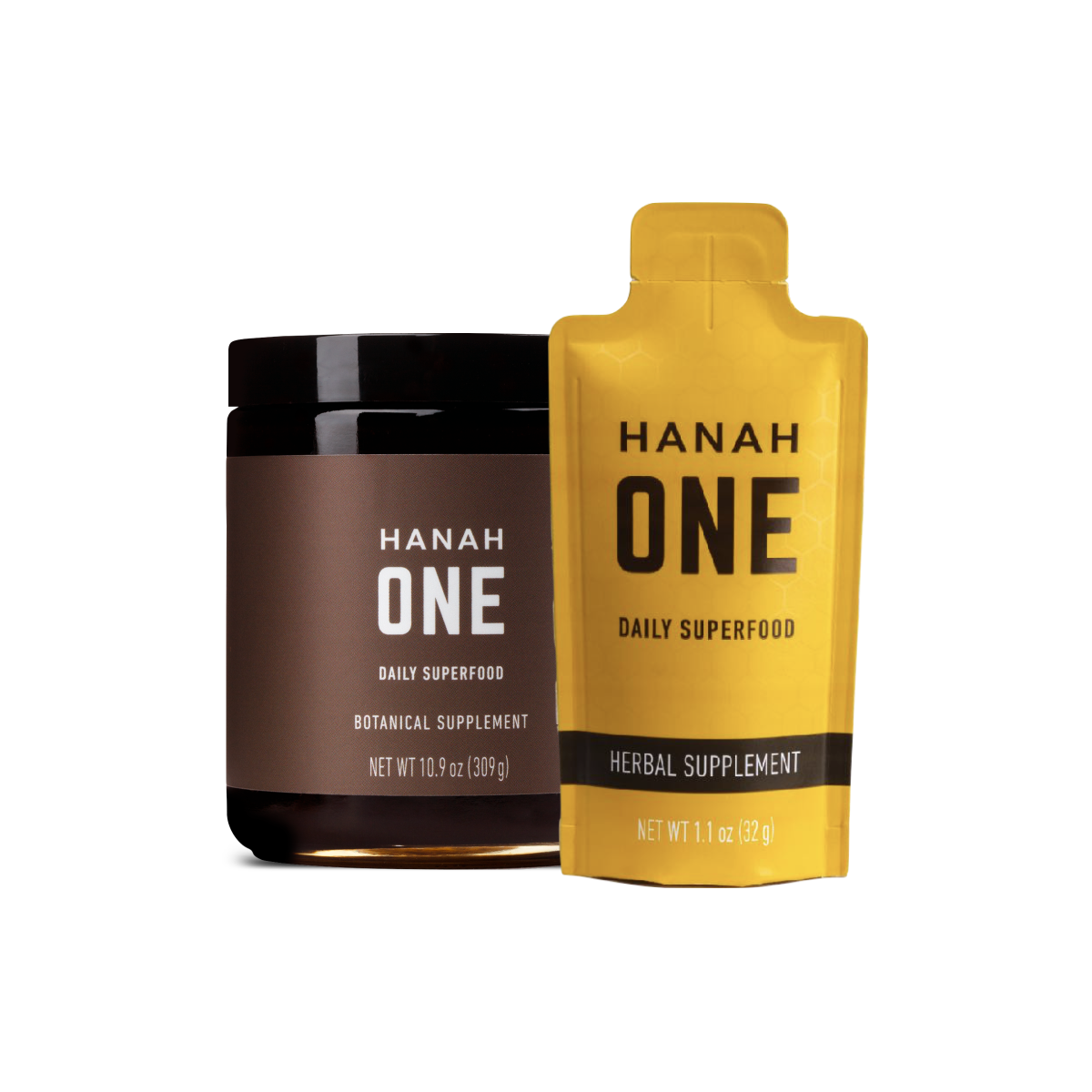Not all ghee is created equal (Part 1 of 2)
An introduction to ghee
Over the last several years of our journey to preserve and share ancient remedies and healing traditions, we’ve learned a lot about ghee. Not only is ghee a key ingredient in our flagship product HANAH ONE, but we launched our very own special line of premium grass-fed ghee, which is hand made in the Ayurvedic tradition in small batches in Kerala, India, from the highly-medicinal milk of the sacred Vechur cow.
Ghee is by no means a new staple in the kitchen, but it is one that has increased in popularity over the last several years in the West as more and more people are recognizing its tremendous health benefits and versatile uses.
As we have learned, not all ghee is created equal. In the first of this two-part series on ghee, we will shed some light on the history of butter and ghee, identify the differences between the two, and share some of the health benefits of “liquid gold,” as ghee is fondly referred to in Indian culture.
A brief history
Butter's origin dates back to about 10,000 years ago when our ancestors first began domesticating animals. Rumor has it that the first batch was accidentally created when a sheepskin bag of milk was carried by horseback on a long journey across rough terrain, thus naturally churning the milk into butter. Regardless of how it was discovered, today butter is used in nearly every culture and has become a universal staple.
Enter ghee
Ghee originated in northern India but its use quickly spread to the southern parts of the country where the higher temperatures demanded a more stable dairy product that would keep on long trade routes. Traditionally ghee is made by cooking off butter's water content, separating the milk solids from the fat. This changes the molecular structure and results in an easier to digest fat product that is lactose free, rich in nutrients and flavor, and shelf stable.
Ghee plays an integral part in Indian life and has moved through the culture as a mainstay that is considered to be a key to longevity. Today it is wrapped in cultural mythology and seen as a pillar of nutrition and Ayurveda. Ghee is truly an “ancient” superfood, the benefits of which have been known for thousands of years, even though it is only now that this delicious and healthy fat option has made its way into the health-conscious world of Western culture.
Butter versus ghee
Butter contains butterfat, milk solids and water. Ghee is created by heating butter to remove milk solids and water, leaving pure butterfat. For the record, clarified butter is different than ghee in that it contains more moisture and stays a liquid consistency. Ghee is simmered even longer until more moisture evaporates and the milk solids are caramelized and filtered out—bringing out its incredible nutty flavor. This process also gives ghee a longer shelf life and higher smoke point than butter and clarified butter, meaning ghee can be heated to a higher temperature before it starts to smoke (450 F), making it one of the most stable cooking fats available.
Another of ghee’s unique properties is that since the milk solids are removed, it contains little to no casein or lactose, the two compounds in dairy that most often cause allergies and sensitivities. This means that most dairy-sensitive people can enjoy ghee.
Health benefits abound
Ghee is rich in digestible fat soluble vitamins A, D and E. These nutrients are essential to overall health and body function. Fat-soluble vitamins can only be absorbed with fat and are stored in the gastrointestinal tract. They are essential to maintaining a healthy metabolism and various biochemical functions in the body. Butter consumption has been tied to increased low-density lipoprotein (LDL), known as unhealthy cholesterol, whereas ghee has been proven to actually lower unhealthy LDL cholesterol levels.
Unlike butter, which is made up of unhealthy long-chain fatty acids, ghee is rich in short- and medium-chain fatty acids that are considered to be heart healthy. Studies published in “Ayu Journal,” a quarterly Ayurvedic research publication, found that populations who consumed ghee regularly have lower instances of heart disease. Ghee has also been proven to reduce inflammation by providing essential nutrients absorbed in the digestive tract.
Ghee and Ayurveda
In Ayurveda, ghee is both hugely beneficial inside and outside of the body. The consumption of ghee offers a wide range of benefits, including clarity of mind and sound digestion. Ghee helps sustain healthy microbes in the gastrointestinal tract to promote effective digestion and elimination. It nourishes all the tissues of the body, including the nervous system, translating into calm energy throughout the day.
Ingesting ghee is also very soothing to the skin, nutritionally rich like coconut oil and overall beneficial in mental clarity and physical health. Ghee is an anupana and is used to help ingest herbs (one of the reasons it’s in HANAH ONE!), and in healing treatments in Ayurvedic medicine. This multi-use fat is a common topical treatment for burns and rashes as well as a great moisturizer and massage oil for the skin and scalp.
Don’t miss the second part of this series where we will dig into why not all ghee is created equal, different types of ghee and why breed of cow, what they eat, location and production method all matter.
Also take a peak at why not all ghee is created equal: our HANAH Ayurvedic Ghee







Leave a comment
This site is protected by hCaptcha and the hCaptcha Privacy Policy and Terms of Service apply.